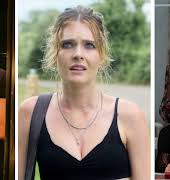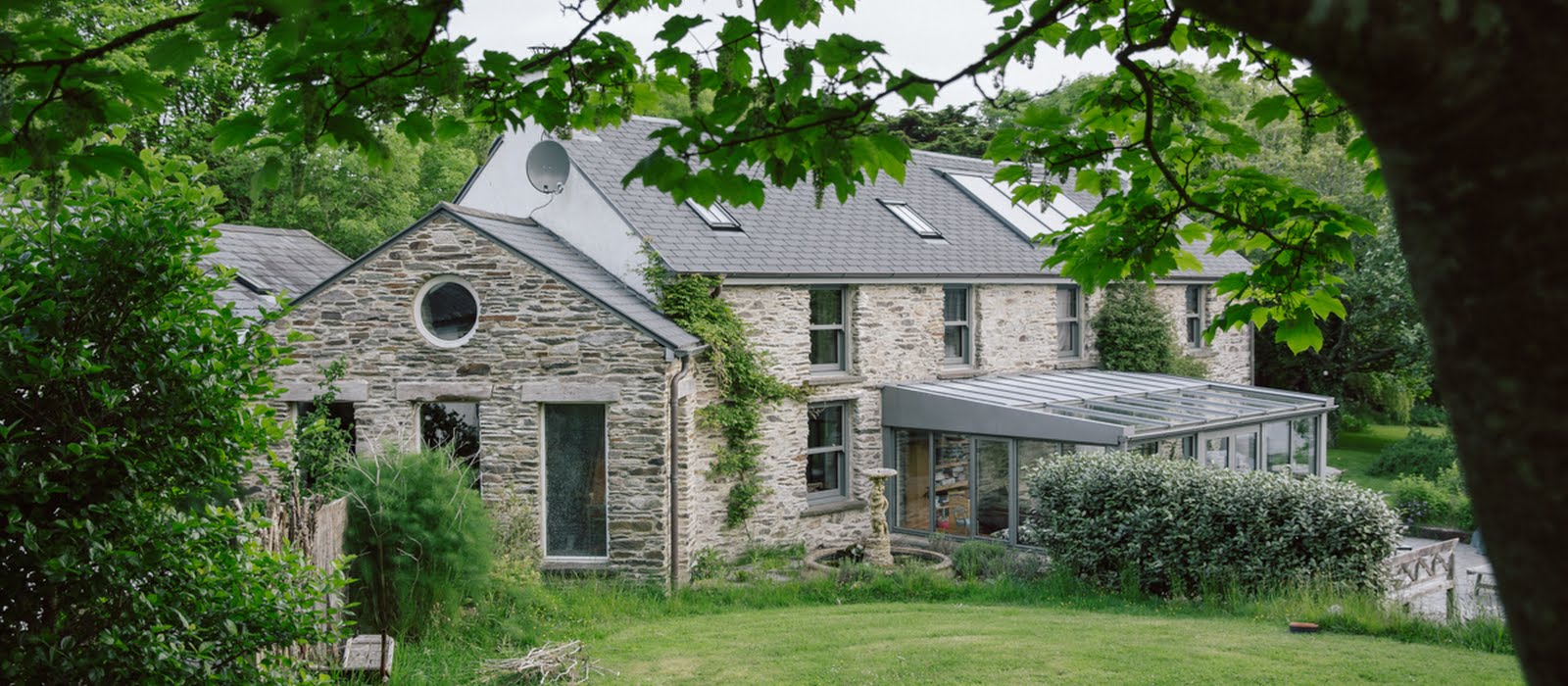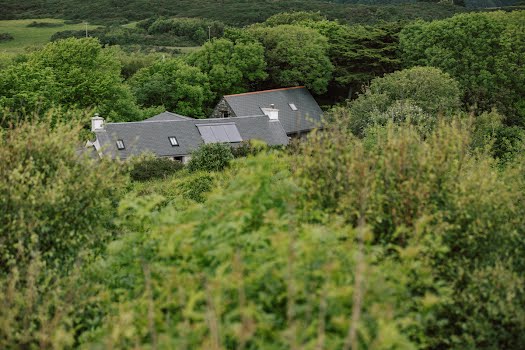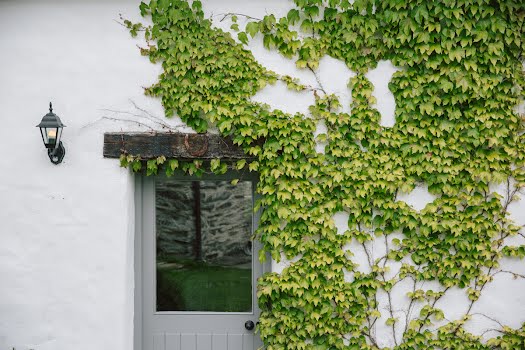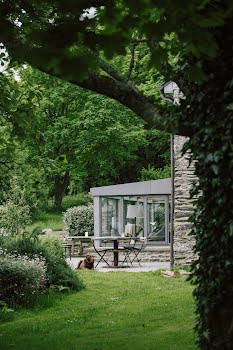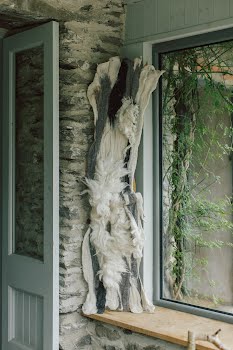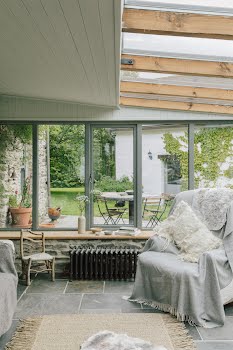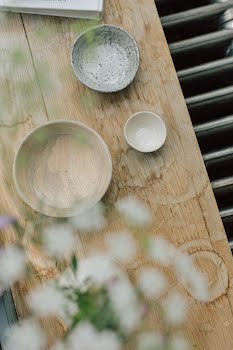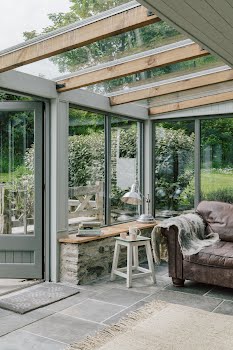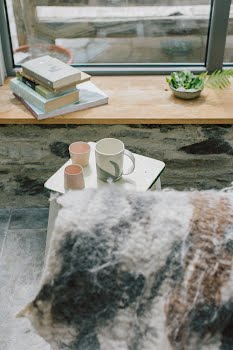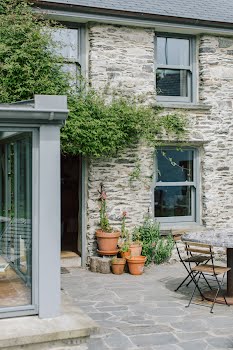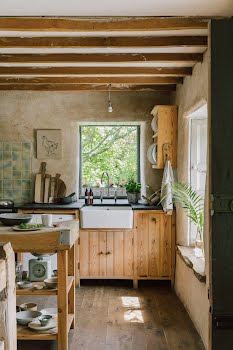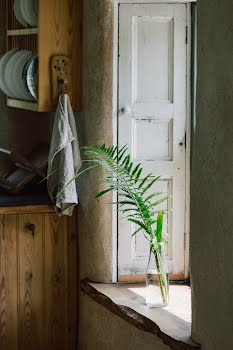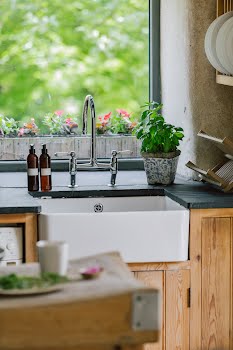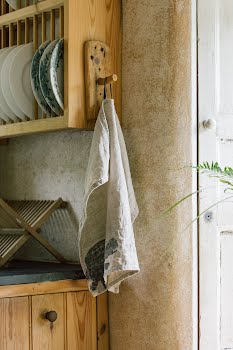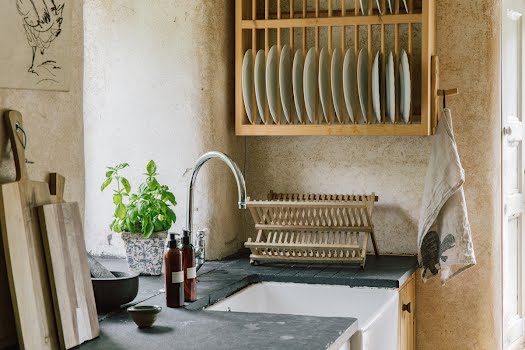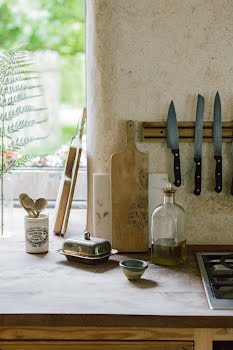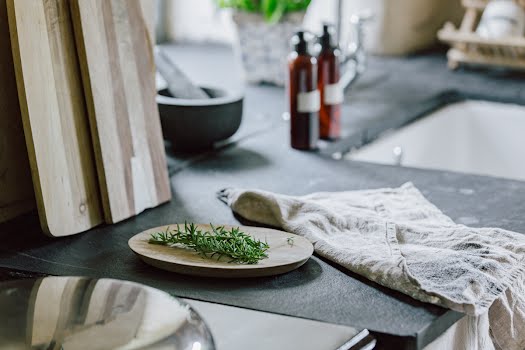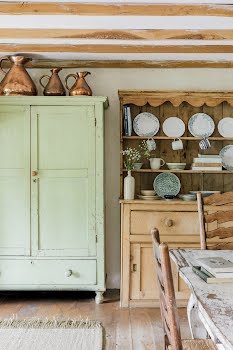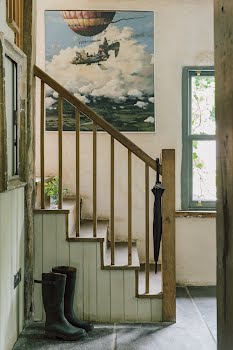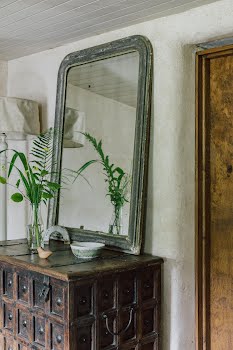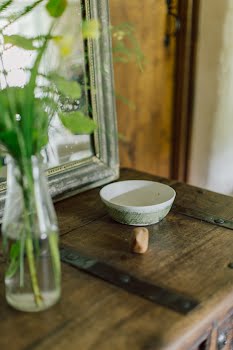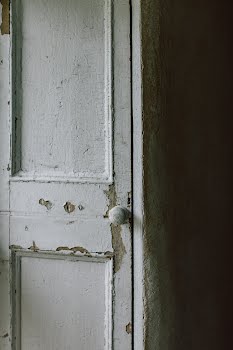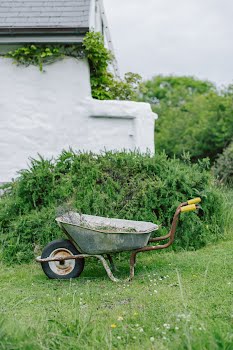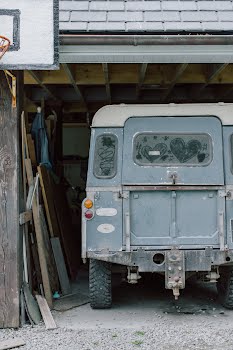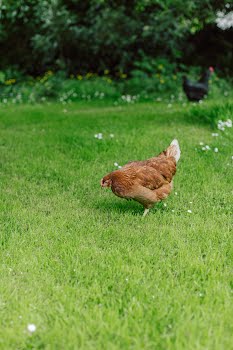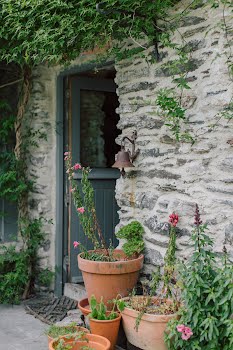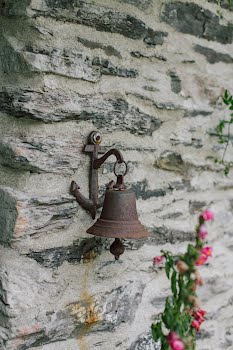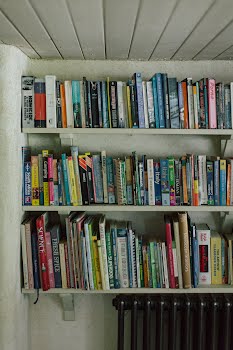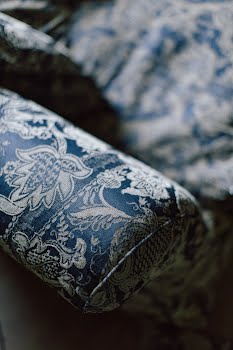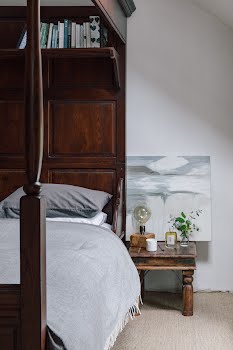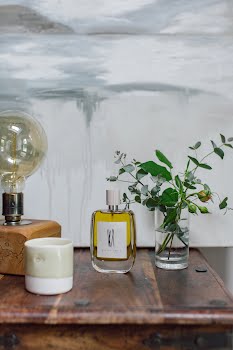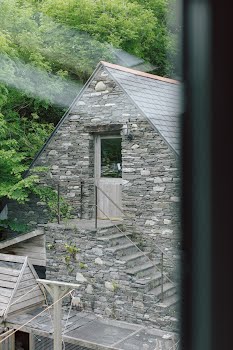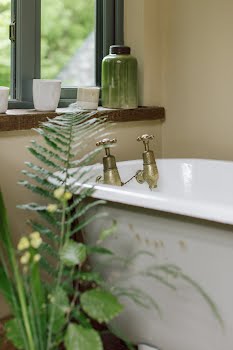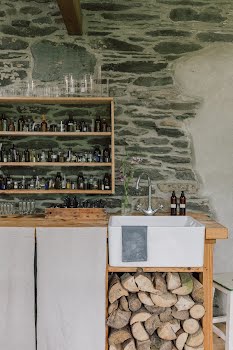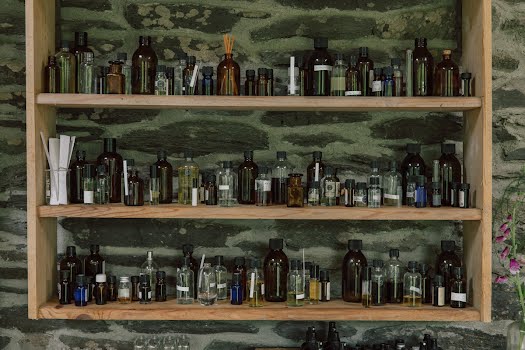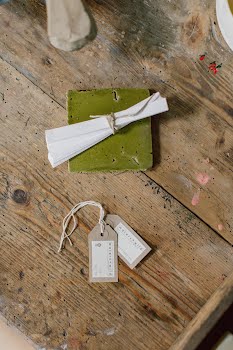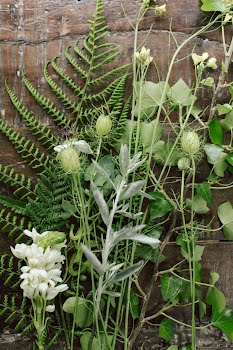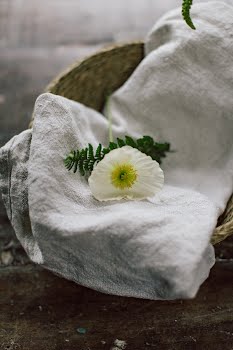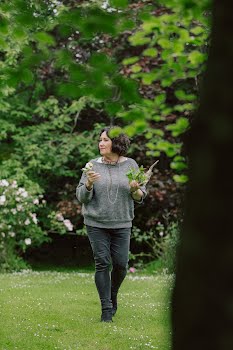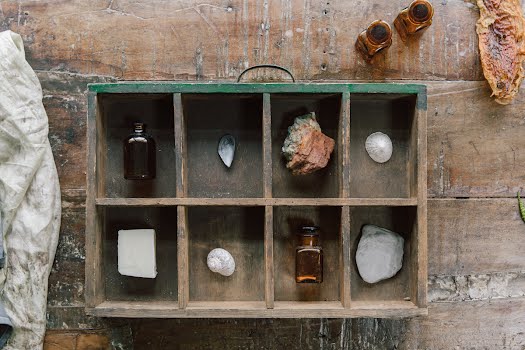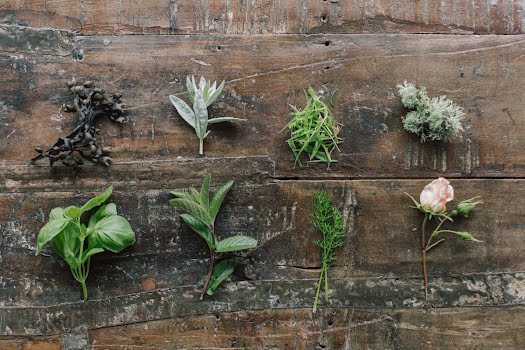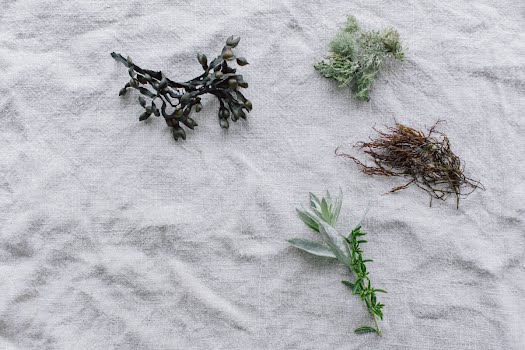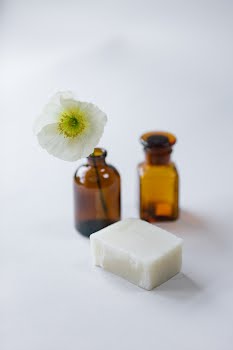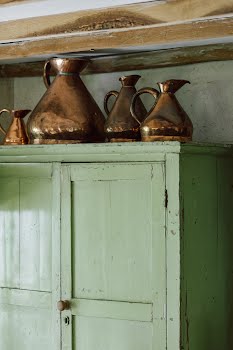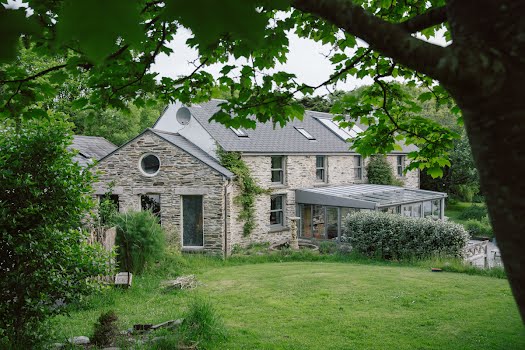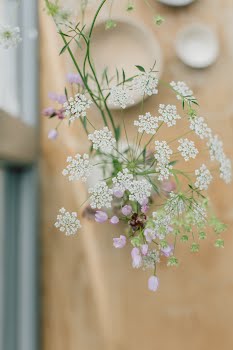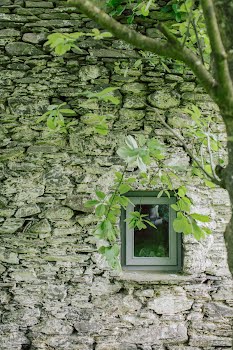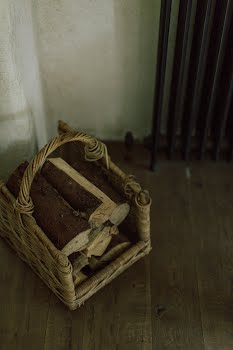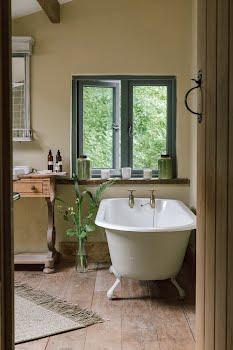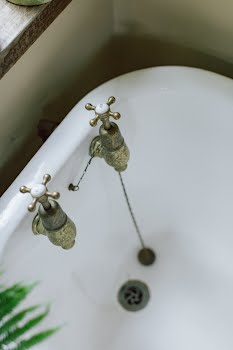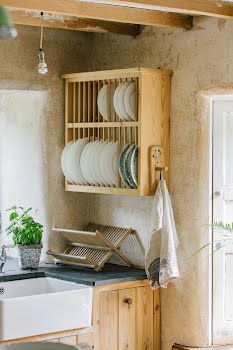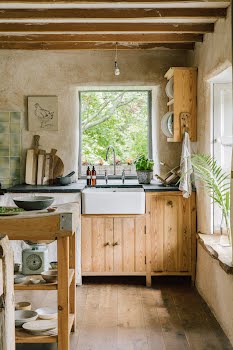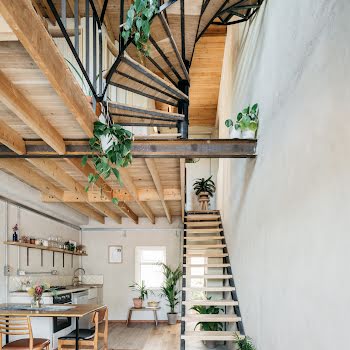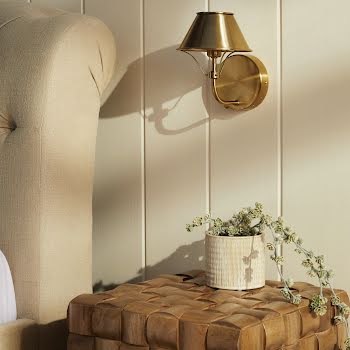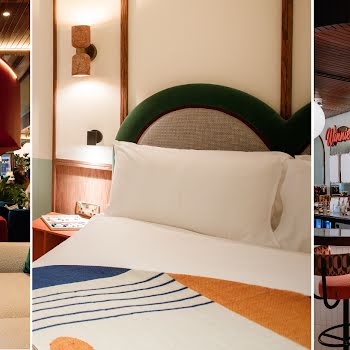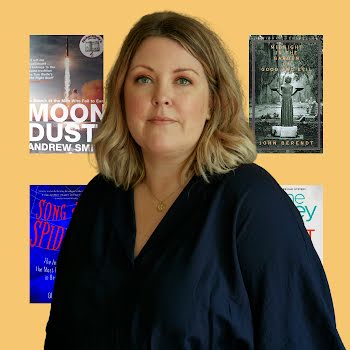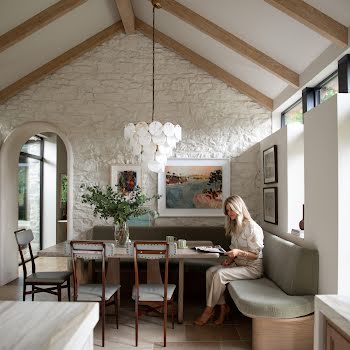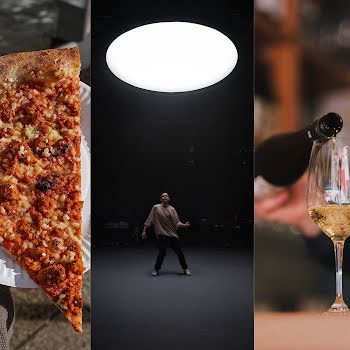
Take a tour of this stunning perfumers house, nestled between the trees in West Cork
Leaving the city, an ambitious couple set about restoring an old farmhouse in West Cork to its former glory, with dreamy results.
“It’s hard to believe it’s been ten years,” muses Joan Woods. The perfumer is talking about her move to West Cork; to a new home, a new business and in her own words, “a totally new way of life”. On the outskirts of Union Hall, Joan and her husband Richard Bradburn have achieved what many urban dwellers dream of. Both have forged successful new careers, hers as a founder of organic perfume company Waters + Wild, and his as an editor and composer, while also raising a young family and taking plenty of time for picnics and sea swimming.
It’s a far cry from Joan’s life a decade ago when she ran two busy independent clothes shops in the capital, Platform and Platform Eile. “I loved living in Dublin and always lived in the city centre,” says Joan. “It’s a lovely way of life when you’re able to walk to work, but I suppose I’d had enough. When you work in a shop, you don’t have time to live. I didn’t know what the weather was like outside half the time.”

Photography by Shantanu Starick, styling by Ciara O’Halloran
West Cork had been niggling at Joan for some time. “I had good friends in Clonakilty and always wanted at least a holiday home here, as I loved the way of life and everything else here. Richard wanted to leave London – he was involved in merging markets– and he wanted to write, so we upped sticks. I sold in Dublin and he sold in London.”
The couple came down to West Cork on holidays, and set about house hunting. They found this house, which was further out than they thought they wanted to be, but it also had a little beach two minutes walk down the road and the Atlantic behind. The old farmhouse land had lots of barns around, so the family had plenty of room to grow into it.

Styling by Ciara O’Halloran
First, they converted one of the barns, so that grandparents and friends could come and stay, while the family lived in the main house. “The farmhouse had been revamped in the seventies, but it wasn’t sympathetic to natural materials. We saw it as a shell that we needed to take back,” Joan explains. “We lived in it for a few years before deciding we couldn’t live with it any longer. Finally we said ‘no, we need to make this lovely for ourselves’. We took it back to its shell and put the old materials back into it.”
They found this house, which was further out than they thought they wanted to be, but it also had a little beach two minutes walk down the road and the Atlantic behind.
Putting the old materials back in
Wood sash windows, old oak floors and slate tiles were key to the farmhouse’s transformation. Richard also wanted to do a lot of it himself so he spent a lot of time looking at hemp walls and limed plaster. Joan recalls, “We took the pebble dash off the walls outside and lime pointed the whole thing. It was really a labour of love.”
Much of their plans were dictated by the existing building and windows, while Joan complemented the feel of the house with architectural salvage pieces and Parisian flea market finds from her shop sourcing days. “Our home has always been a mixture of what we both have, which is not always compatible,” Joan laughs. “That’s just the way it is. I had a beautiful chandelier from the shop for example, but there is literally nowhere to put it.”

Styling by Ciara O’Halloran
Today, her favourite elements are the base raw materials that they didn’t skimp on – from the oak wood staircase, to the slates in the hall, the wood floor in the kitchen and the hemp walls that envelope the entire home. “They make me really happy,” Joan muses. “We haven’t spent much on furniture. We use what we have, so those basics are just really beautiful. There’s a lovely sense underfoot all the time and it runs through everything.”
In a neighbouring barn, we visit Joan’s workspace, which in terms of feeling echoes the main house. With a rustic yet minimalist charm, it’s somewhere that invites you to linger. Luckily so, as Joan plans on spending a lot of time here in the coming months, as she launches Waters + Wild natural candles and more to the body range. “There’s a lot to do and nothing is totally finished,” she says, before heading back out to feed the hens.

Photography by Shantanu Starick, styling by Ciara O’Halloran
This article was originally published in 2021.


